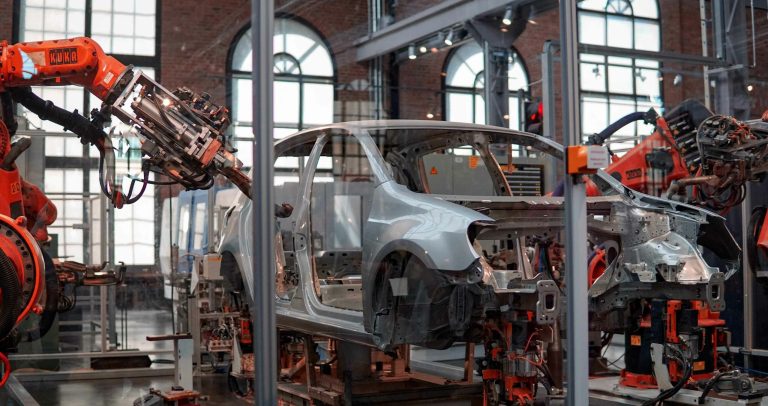We are not the first to worry about technological unemployment. In fact, concerns about it have been with us for at least two centuries. It dates back to the early times of the Industrial Revolution in Britain with, for example, breakthroughs in machinery aimed at the automation of weaving and spinning. The industrial production process is based on standardized and repetitive tasks distributed through a complex division of labor that makes factory floors constantly subject to replacement by machinery depending on developments in engineering science. But an obvious question arises: If technologies are going to take over the tasks performed by workers, why has labor demand and labor share remained broadly strong and stable over the past two centuries?
This question has been clearly addressed by Acemoglu and Restrepo, using economic modeling that emphasizes the productivity gains achieved by automation technologies. It is easy to understand that in order for automation to be of economic value the technologies must be cheaper than labor performing the same tasks. It is this cost-saving advantage of automation that stabilizes labor demand because industries can expand and hire more workers to perform non-automated tasks. A clear example of this is the widespread adoption of automated teller machines (ATMs) among banks. These machines, as Bessen documented, actually increased the employment of bank tellers who specialize in non-automated tasks, such as customer relationship management, while banks were able to open more branches at a cheaper rate.
But productivity growth has not fully explained why labor’s share of national income has remained roughly constant. And frankly, again, if automation is to reduce the share of labor by displacing workers from their jobs, the opposite state of affairs will mean the creation of new labor-intensive tasks that bring labor back into the production process. Historically, the creation of products, services, and often even industries by technological advances has successfully created new tasks in which humans have comparative advantages over machines. The episode of agricultural mechanization in the nineteenth century is a good example of this pattern. Workers removed from the agricultural industry were largely rehired to meet emerging demand in both manufacturing and service industries.
A general discernible pattern in history is that technological developments do not just automate tasks and that automation does not necessarily reduce the demand for labor. Instead, technological breakthroughs lead to major structural shifts within professions and industries by changing tasks in which humans have comparative advantages over machines. These processes have, in the past, shown positive results in the field of employment. In light of these experiences, many economists argue that even with the terrifying advances in artificial intelligence (AI) having the potential to automate many non-routine and cognitive tasks, things won’t be much different this time either. This argument is justified primarily on the grounds that the potential for task creation is great in many occupations. For example, Vermeulen and his colleagues documented a significant increase in the number of jobs in professions such as computing, mathematics, architecture, engineering, robotic technology, and so on. Therefore, Vermeulen argues that the development of employment and labor markets in the context of developments in AI and robotics technologies is likely to represent just the “usual structural change”.
So, will this time be different? By taking a closer look at the process of structural transformation, we can see that workers are always being pushed to adjust and update their skills toolkits to respond to major shifts in task demands for labour. This adjustment process may be more challenging than in the past and will be somewhat “unusual” insofar as technological developments now raise demand for labor predominantly in the category of highly skilled occupations that require a significant level of training and educational attainment. For example, new developments in artificial intelligence and robotics technology create complementary tasks, such as programming and training, for highly educated workers to perform. Similar patterns of new demand for skills are expected to unfold in big data analysis, software engineering, automotive, 3D printing, etc., which once again favors educated workers. This is happening at the same time as the decline of traditional mid-skilled jobs in manufacturing, clerical and administrative support, sales etc. due to computerization, that displaced workers must find a way to be rehired into other occupations preferably with a new labor demand. This is why economists call for the urgent need for more upskilling and re-education programs to speed up the upskilling process.
But, can we really achieve such an upgrade in skills? Isn’t it a fake wish? Many of the occupations categorized above as “high-skilled” require undergraduate and graduate degrees—in other words, a requirement that newcomers undergo at least five to ten years of relevant training and education. A more realistic view of future structural transformation is that homeless workers will be increasingly inclined to enter low-skill, low-paying service jobs. The result is downward pressure on wages for jobs in these occupations, with less union power, and ultimately lower-quality jobs. This, along with the growing demand for highly skilled occupations and the limited supply of qualified workers, may leave society vulnerable to a large wage disparity.
Perhaps the good news is that tasks in low-skill occupations are somehow beyond the reach of automation due to both technical issues and cost considerations. Hence, the residual demand for labor may well absorb the displaced labor force.
However, the COVID-19 pandemic may unfortunately change this picture in at least two ways. First, health concerns and social distancing restrictions on human labor have created more economic incentives for companies to automate tasks. Therefore, if employment opportunities in some sectors are doomed to decline, Covid-19 is shortening the period in which this will happen, which increases the pressure on the hiring process.
Secondly, the pandemic is helping companies and workers to learn about the large indirect costs of being physically present in offices, such as the cost of renting offices, daily commuting, etc., which promotes “telepresence” as a new way of communicating with the workplace. This has obvious consequences for many low-skilled service professions as the demand for labor shrinks for building cleaning, travel, hotel, restaurant, security, taxi industries etc. If these job opportunities disappear permanently, the displaced workers will face great difficulties in being rehired again.
In these respects, this time may be different. We may face a more difficult and painful adjustment process in the labor market. Rising unemployment, wage inequality, low-quality jobs, declining labor unions, and a thriving “gig” economy will continue to be the results if we fail to respond properly to the demands imposed by the new technologies we have created.
Kingkun (Eric) Ding is a Research Assistant in the Bristol Model Project at the University of Bristol.
Photo credit: Lenny Kuhne on Unsplash

